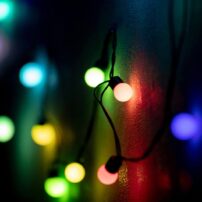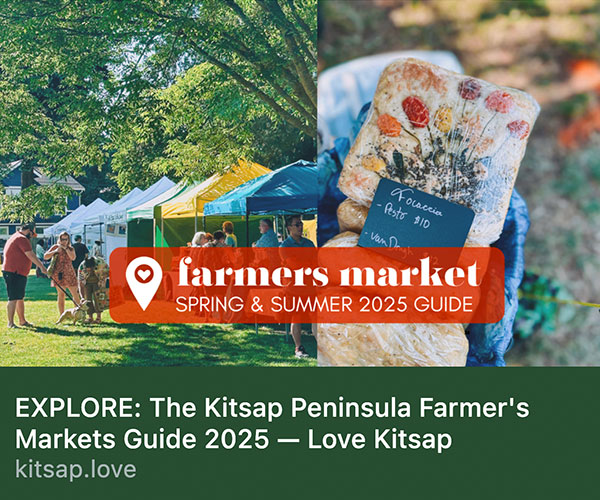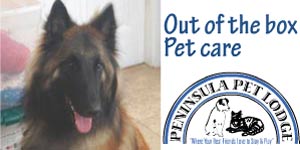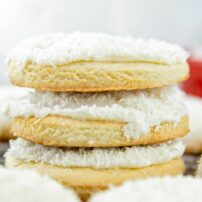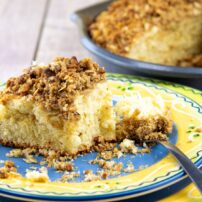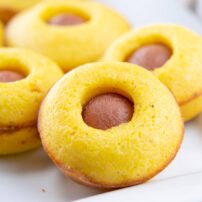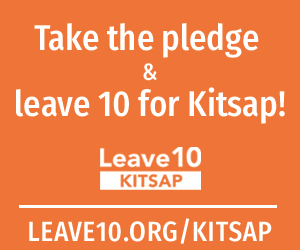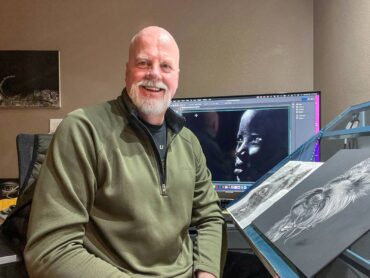
He just sold the most challenging piece he’s ever created, and the awards are stacking up for Gig Harbor scratchboard artist Steve Hammond. He is currently contracted with the Barlow Gallery in Tacoma, where Hammond recently sold a portrait of a Native American in full regalia. Titled “Pow Wow,” this work is a 16-by-20-inch, detailed scratchboard that has catapulted him to a whole new level in his journey of creativity.
That piece won an Award of Excellence in the Scratchboard Society show in Arizona in 2023, adding to Hammond’s long list of awards. They include the People’s Choice Award at the 2023 Summer Arts Festival in Gig Harbor, the President’s Award in the Open Juried Show in Gig Harbor in 2023 and second place in the Peninsula Art League Summer Art Festival Members Show in 2024, to name a few.
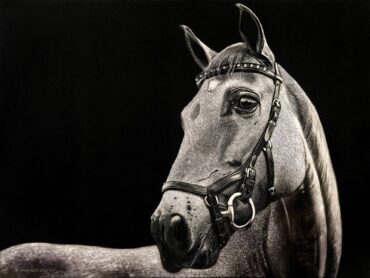
After years of exploring creativity, including acrylic on canvas, Hammond found this new medium as he approached the age of 60. He has embraced it and found great success. His first gallery acceptance was at Ebb Tide Gallery in Gig Harbor at the age of 63.
“I’ve always been creative, but I was so surprised when I won my very first show after joining the Scratchboard Society,” Hammond said, adding that he’s most proud of the People’s Choice awards because they’re based on the public’s votes rather than judges, who are artists.
Only five years into his exploration of scratchboard, Hammond is a signature member of the International Society of Scratchboard Artists and is now eligible to apply for the designation of master. He has fulfilled the list of requirements, including teaching, being published, exhibiting in a gallery and winning international awards.

With his advanced skills in the medium, Hammond can now fetch more than $1,000 for some of his gallery pieces.
“Collectors are what the business is all about, and you have to get a following,” he said. “So, it takes time. I’m getting there.”
Hammond is a partner at the advertising agency H2R. He works a full day, then spends at least a couple of hours each evening, as well as on weekends, in his art studio. When he needs a break from the concentration required for the detailed images on the scratchboard projects, he turns to the canvas.
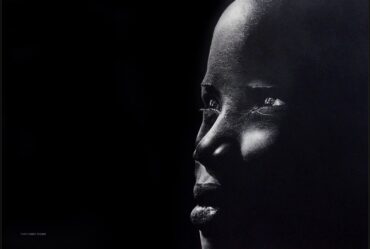
His paintings are also popular with art enthusiasts and collectors, and Hammond said he uses a lot of color in those because that’s how he sees the world. From wild animals to serene seascapes and woodland paths, Hammond takes the viewer on a journey into places that are both familiar and unexpected with his use of varying color hues and his vision of the natural world.
Scratchboard is an entirely different art medium. The artist uses a thin board covered with clay and coated in black India ink. That middle layer can be white or a warmer shade of off-white, which Hammond has used when creating portraits. Scratchboard artists scratch away layers of the black ink to reveal an image with varying shades of gray and white or off-white, depending on the type of board.
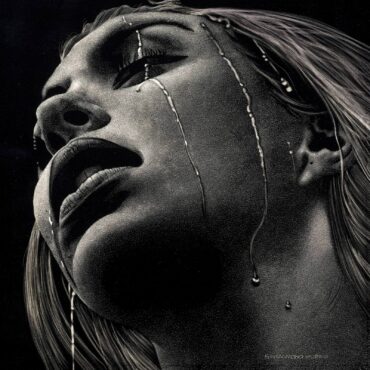
To create the scratchboard image, Hammond said he first tapes down a paper print of a photograph that is the same size as the board he is using, and he traces the image onto the board. Then, he carefully begins to remove the black ink to reveal his intricate, detailed images.
However, before he even begins, the image must inspire him to do the work. And, even if he really likes an image, it doesn’t mean that it will translate well onto scratchboard. Hammond first looks at the image in black and white to determine that.
When he can, he takes his own photographs of subjects; however, he sometimes uses images he comes across online. Zoos are another place where he finds inspiration, and he typically visits a zoo very early in the morning to capture the animals when they are playful, eating, yawning and moving. He bought a new camera, which he used to take more than 1,000 shots at a rodeo.
“I just shot the rodeo because I’m doing a series of bull riders for a group in Colorado,” he said.
Taking so many pictures gives him a better understanding of how the animal moves, the fur sits on the flank and the mane moves in the wind. Understanding the anatomy of an animal, whether it’s a horse or a whale, is important, he explained, because if the details of the subject are wrong, someone will notice.

Manipulating the size of his art has taken his scratchboard success to another level. As Hammond began to shop his work with galleries, he approached some in Colorado, where he’s from. Some of his subject matter is quintessential American Southwest. But he wasn’t getting a lot of interest. One gallery owner suggested that his work needed to be much larger. Art collectors typically have homes with cathedral ceilings and massive wall space that dwarf average-sized art pieces. To have an impact, he told Hammond that he had to go very large.
“He said, ‘Those houses up there, your 24-by-36s would go in their bathrooms. You need big work. They have 50-foot walls,'” Hammond recalled.
He took the advice and started creating huge works of art. Being in the business of visual art with his advertising firm, he knows the ins and outs of how to enlarge an image while preserving its integrity.
Some of his newer pieces occupy most of a wall in a house, and he said that’s what many collectors are looking for now.
“They’re big pieces,” Hammond said. “I did them in about three weeks, and so I had them all scanned, and I understand what good DPI (dots per inch) will give you.”
He has been commissioned to do a series of scratchboard pieces that will be installed throughout a casino and hotel. Hammond was also commissioned to create a 5-by-4-foot Native American dancer that will be revealed in a hotel lobby in 2027, and he estimated it will take him six months to finish.
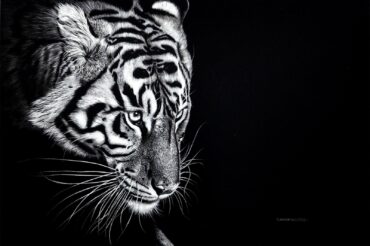
Hammond credits his mentors for his success. He said a friend who has become a professional artist, Julie Chapman, coached him on how to begin with scratchboard art. She had finished a large bull rider, which Hammond said was the first piece that piqued his interest in the medium.
“She said, ‘You can draw, or I wouldn’t send you these.’ That was seven years ago. So, I joined the Society because she recommended I do it.”
By joining, Hammond was exposed to other artists who do scratchboard for a living. He learned how to price his work, as well as which unconventional tools to use to produce the intricate details in his pieces. Learning from them has been beneficial, he said.
“The masters all have a trick,” he said. “And, a lot of it is the tools.”
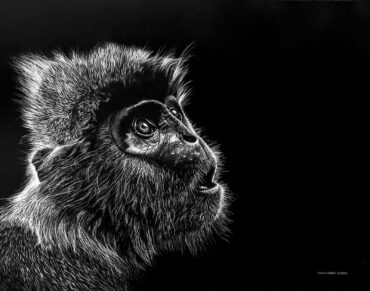
His tool chest includes various knives, scalpels, tattoo needles and brushes. One of the tools leaves a residue of fiberglass, which he learned the hard way can embed in the skin if the hand is used to brush it away from the image. Now, he wears a glove with a cut-out thumb and forefinger when using that tool.
To help magnify the tiny details while he’s working, Hammond has a set of magnifiers that fit onto glasses frames, with a small light that casts onto the work. It comes in handy when he’s stippling and creating the strands of hair or the mane of a horse.
One of the techniques that Hammond has yet to master is crosshatching on scratchboard. Another artist, who is represented in four galleries across the country, prefers to crosshatch instead of stipple, he said.
“She’s so good at it, and she will crosshatch the light from a lens that gets broken in the background that are out of focus circles, called bokeh circles,” he said. “She’ll have a loom on the water, and it’s reflecting, and there’s bokeh in the grass that’s out of focus, all done in crosshatch. I can’t do it yet. I still don’t have that technique.”

He is developing a video for gallery visitors, showing his process of creating scratchboard art, because most haven’t seen scratchboard before, he said. Hammond speculates that there may be approximately 1,000 scratchboard artists in the world, and only about 465 professionals in the Scratchboard Society.
Not many people are aware of the medium, he said, and that’s why the Society wants teaching to be part of the journey to master level. Hammond has been teaching in-person workshops with the Peninsula Art League and some high school students via Zoom.
Hammond is the marketing director for the Peninsula Art League, and his work is currently at the Barlow Gallery in Tacoma. You can find more information about Steve Hammond’s art at stevehammondfineart.com.








